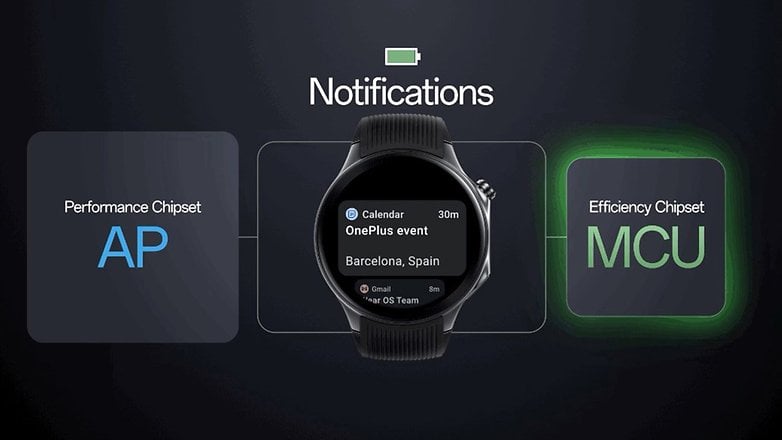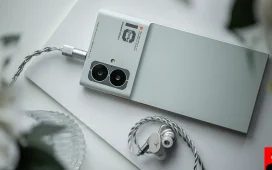Smartwatches today have gone from being a basic fitness tracker that can count the number of steps you take in a day to an advanced device that can detect irregular heart rates or even perform complex tasks. However, one thing that manufacturers haven’t improved much over the years is the battery life of these wearables. OnePlus and Google have been working on that solution by introducing a new “hybrid” Wear OS interface that will debut on the OnePlus Watch 2.
Launched at MWC, the OnePlus Watch 2 (review) is a major upgrade in many areas compared to the first smartwatch from the Chinese brand. Among the major upgrades is the more robust battery life of the smartwatch which is touted to last up to 100 hours in smart mode.
While our colleague Camila has yet to publish the full review of the Watch 2, the promised endurance is already noticeable during the early days of her review, with the device surviving up to 2 days with some juice to spare. The battery life is notably longer than most of its competitors, even with Google’s Pixel Watch 2 (review).
What is the hybrid Wear OS interface all about?
Much of the battery life gain on the OnePlus Watch 2 is credited to the new hybrid Wear OS interface the device boots on. The hybrid segment means that the Watch 2 runs on two operating systems and is equipped with two chipsets.
Basically, the Watch 2 relies on Wear OS 4 paired with the main Snapdragon W5 SoC which is labeled as AP or application processor to manage more intensive tasks. Meanwhile, other tasks are handled by RTOS, OnePlus’ proprietary operating system, which is in tandem with a BES 2700 low-power coprocessor.

As OnePlus noted, most of the time when the OnePlus Watch 2 is in standby mode or performs light tasks, including heart rate, sleep detection, and displaying first-party watch faces, RTOS and the coprocessor will kick into gear. On the other hand, the Snapdragon W5 only enters action in instances such as launching apps, managing third-party watch faces and complications, and Bluetooth calls.

The method is actually not new as Google and other OEMs like Samsung have employed a dual-chipset approach in recent years. With the hybrid Wear OS interface, the transition between the two processors and during OS-switching is more seamless and optimized. Likewise, it also widened the job scope of the secondary OS and processor, covering more functions that subsequently help conserve more power in the long run.
Will other smartwatch makers adopt the hybrid Wear OS interface?
Based on what we know, the hybrid interface is set to be employed by other brands as well. This means more smartwatches would also receive a comparable promising battery life as the OnePlus Watch 2. Perhaps, we will see this arrive on the Google Pixel Watch 3 or Samsung’s upcoming Galaxy Watch 7 as well.
Do you think we will see more manufacturers introduce smartwatches powered by the hybrid Wear OS interface this year? What are your thoughts on this new development from Google? We like to hear your opinion.








